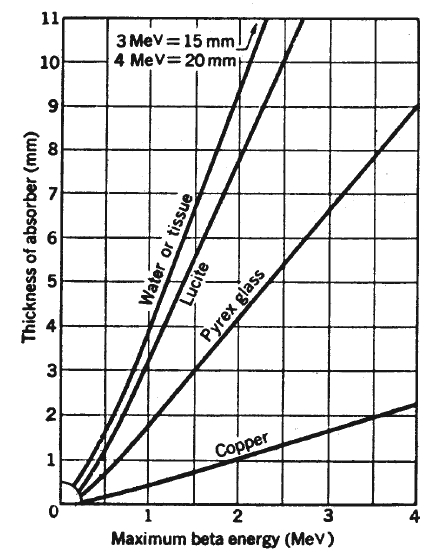Mechanism of action
of Ding-Filters
Radiation: Alpha-, Beta, Gamma radiation
Alpha radiation:
An alpha particle entering the body via inhalation or food is
very harmful because, in this case, living cells are damaged
instead of dead skin layers. In particular, the accumulation
of alpha radiation of a decaying nuclide in an organ leads to
a high burden on the organ, because a high radiation dosis has
damaging effects in a small area on important body cells (radiation
sickness).
Alpha radiation is easily shielded. Principally, the incorporated
dust filter is already enough.

|
Beta radiation:
The range of beta radiation in the air is several meters and
it penetrates biological tissue about 1 cm deep. The deposit
of particles on unprotected skin can cause severe radiation damage
due to the high ionization ability: burns on the skin with an
after effect of skin cancer are possible. Beta radiation incorporation
into the human body heavily burdens the surrounding areas in
the body; thyroid and bone marrow cancer as well as leukemia
are known after effects.
For this reason an adequate shielding is absolutely necessary.
Beta radiation is completely absorbed by copper with 1 mm thickness
(at 2MeV). The Ding-Filter contains the appropriate amount of
copper. For cellulose you would need almost 10mm.
The most important fission products: Cesium-137 1,2 MeV - Iodine-131
0,8 MeV - Strontium-90 0,5 MeV -
Yttrium-90 2,3 MeV |
|
Absorber |
100 keV |
|
Air |
3555 |
|
Water |
4.15 |
|
Carbon |
2.07 |
|
Aluminum |
1.59 |
|
Iron |
0.26 |
|
Copper |
0.18 |
|
Lead |
0.012 |
|
Gamma radiation:
Gamma radiation is the third and most well-known radiation type
and also the most dangerous. Because of its enormous range and
high ability to penetrate matter, it is able to cause the severest
injuries, burns, and even changes to the genetic makeup.
For gamma radiation, a maximum range cannot be specified. With
absorption materials, one can only achieve an attenuation of
the radiation intensity. How much the radiation weakens depends
on the type of absorption material used as well as the energy
of the gamma radiation. The only suitable absorption in the case
of strong radiation is lead.
In the case of low radiation, as it occurs in the areas outside
of the restricted zones, copper is very well suited.
In order to reduce radiation of 100 keV by one half, one needs
1,8mm copper, of 50 keV, 0,3 mm copper is sufficient. |
(University Potsdam, Dinnovative
Kaiserslautern, National Institute of Science & Technology,
The Center for Synchrotron Radiation Research and Instrumentation
at the Illinois Institute of Technology.)
|
Radioactive survey University of
Kaiserslautern, department physics |

|
|
Absorber |
Mouth
guard with Ding-Filter |
Regular mouth guard |
Gamma rays
X-rays |
35 keV
I0=4924
cps
I1=125.4
cps |
20 keV
I0=4740
cps
I1=0
cps |
|
35 keV
I0=4924
cps
I1=4921
cps |
|
Beta rays |
Chlor-36 0,7meV
0 Rad= 10 cps I0=126 cps
I1=9,31
cps |
Strontium-90 0,546meV
0 Rad= 0,3 cps
I0=224,4
cps
I1=44,7
cps |
|
|
|
Strontium-90 0,546meV
0 Rad= 0,3 cps
I0=293
cps
I1=252,3
cps |
|
|